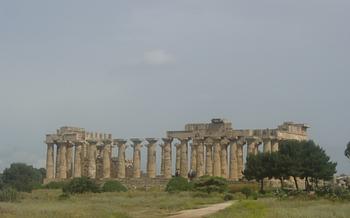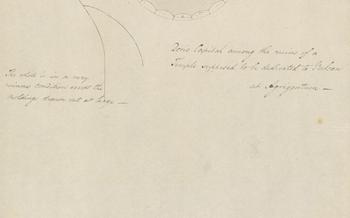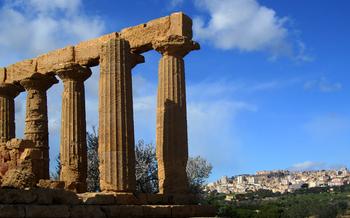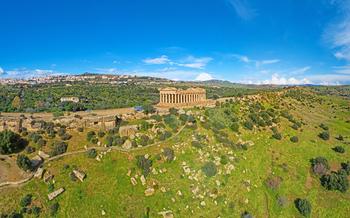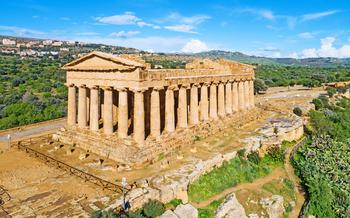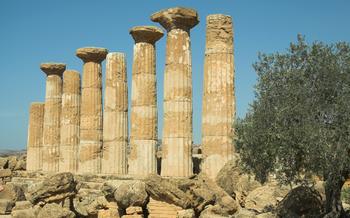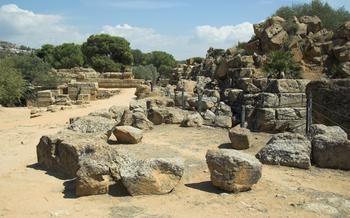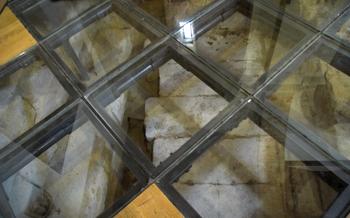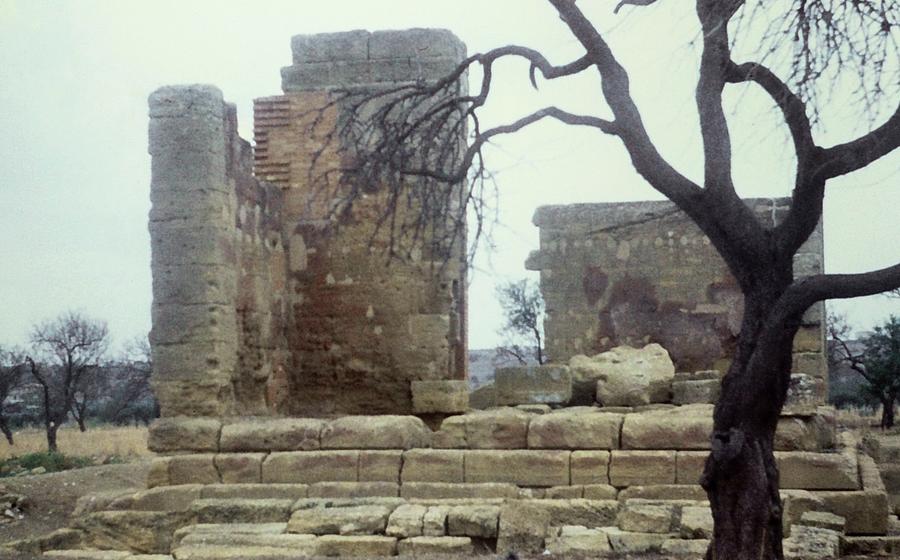
Temple of Apollo
- Introduction
- Location of Agrigento in Sicily
- History of the Temple of Apollo
- Description of the Temple
- Function of the Temple
- Discovery and Excavation
- Architectural Features
- Significance of the Temple
- Temple Surroundings
- Restoration and Conservation
- Visiting the Temple
- Tips for Photography
- Historical Context
- Cultural Impact
- Insider Tip: Unveiling the Temple's Magic at Sunrise or Sunset
Introduction
In the heart of Sicily lies Agrigento, a city steeped in ancient history and architectural wonders. Once a thriving Greek colony known as Akragas, Agrigento was renowned for its opulence and grandeur. Among its many treasures, the Temple of Apollo stands as a testament to the city's glorious past and the enduring legacy of Greek culture. Located in the picturesque Valley of the Temples, this magnificent structure invites travelers to explore its historical significance, architectural marvels, and mythical associations.
Location of Agrigento in Sicily
Agrigento is situated on the southern coast of Sicily, a region renowned for its natural beauty, rich history, and cultural heritage. This strategic location allowed Akragas to flourish as a maritime power and a center of trade, connecting with other Greek colonies and civilizations across the Mediterranean. Today, Agrigento remains a popular destination for travelers seeking to discover the island's ancient treasures and immerse themselves in its vibrant culture.
History of the Temple of Apollo
The Temple of Apollo, a proud testament to ancient Greek culture, was constructed during the 6th century BC, making it one of the oldest Doric temples in Sicily. Its architectural style, heavily influenced by Greek culture, showcased the refined artistry and engineering of the time. The temple stood as a symbol of Agrigento's power and wealth, attracting pilgrims and visitors from across the region. However, in the 4th century AD, a devastating earthquake brought about its downfall, leaving only six columns and fragments of its former glory.
Description of the Temple
The Temple of Apollo, a testament to the grandeur of ancient Greek architecture, stands in the heart of the archaeological park, its six columns reaching skyward as silent witnesses to the passage of time. Originally adorned with thirty-six Doric columns, only a fraction have survived the ravages of time and natural disasters, yet their presence evokes a sense of awe and wonder. The entablature, the horizontal band resting atop the columns, and the pediment, the triangular gable above, lie in ruins, their fragments scattered around the site, hinting at the temple's former glory. Despite its dilapidated state, the Temple of Apollo displays remarkable construction techniques, evident in the precisely cut limestone blocks and the intricate joinery, which allowed the massive structure to stand for centuries.
Function of the Temple
The Temple of Apollo served as a sacred space for religious rituals and ceremonies dedicated to Apollo, the Greek god of music, poetry, prophecy, and healing. As the patron deity of the city, Apollo held a significant position in Agrigento's religious and cultural life. Ancient Greeks believed that Apollo communicated with mortals through oracles, providing guidance and prophecies. Devotees would seek counsel from the oracle, often in times of uncertainty or before embarking on important endeavors. The temple also hosted various cultural and artistic events, including musical performances, poetry readings, and dramatic presentations. These events attracted visitors from across the Greek world, further enhancing Agrigento's reputation as a center of cultural excellence and fostering a sense of community among its citizens. Additionally, the temple's imposing presence and grandeur symbolized Agrigento's power and wealth, serving as a testament to the city's status as a significant player in the ancient world.
Discovery and Excavation
The Temple of Apollo lay buried beneath layers of earth and vegetation for centuries, hidden from the world. Its rediscovery in the 19th century marked a pivotal moment in the understanding of Agrigento's history and the significance of the Valley of the Temples.
In the mid-1800s, a surge of interest in ancient Greek and Roman ruins swept across Europe. Scholars, archaeologists, and adventurers alike embarked on expeditions to uncover and document these remnants of the classical world. Among them was a French architect and archaeologist named Dominique Vivant Denon.
In 1806, Denon arrived in Agrigento, drawn by the rumors of ancient ruins scattered throughout the valley. Through painstaking excavations and careful observation, he identified the remains of the Temple of Apollo, along with several other structures. His discoveries ignited a wave of enthusiasm and further exploration in the area.
In the decades that followed, archaeologists from Italy and abroad flocked to Agrigento to conduct systematic excavations. They unearthed additional portions of the temple, including the imposing columns, fragments of the entablature, and intricate sculptures that once adorned the pediment.
The collaboration between dedicated archaeologists and local authorities proved instrumental in the rediscovery and preservation of the Temple of Apollo. Through their tireless efforts, this ancient site was brought back to light, revealing its secrets and shedding new insights into the rich history of Agrigento.
Architectural Features
The Temple of Apollo showcases remarkable architectural features that exude the essence of Doric style. Its imposing columns, crafted from locally sourced limestone, stand tall, adorned with intricate capitals that exhibit the characteristic echinus and abacus elements. The skillful execution of these capitals highlights the attention to detail that characterized Greek architecture. The temple's pediment, although partially eroded by the passage of time, still reveals traces of exquisite sculptures depicting mythological scenes. These sculptures narrate tales of gods and heroes, providing a glimpse into the rich mythology that permeated ancient Greek culture. The influence of Greek architectural styles is evident in the overall design and proportions of the temple, showcasing the harmonious balance and symmetry that defined classical Greek architecture.
Significance of the Temple
The Temple of Apollo holds immense significance, earning its place as a UNESCO World Heritage Site. It stands as a testament to the ancient Greek culture that once flourished in Sicily. This temple symbolizes the rich history and heritage of Agrigento, a city that was once a prominent power in the ancient world. The temple's grandeur and intricate architectural features have captivated travelers and archaeologists alike, making it a must-see destination for anyone interested in history, architecture, or culture.
The Temple of Apollo's importance extends beyond its historical significance. It serves as a source of inspiration for artists and travelers. Its majestic columns and elaborate sculptures have been immortalized in paintings, photographs, and literature, capturing the imagination of generations. The temple's enduring legacy continues to inspire awe and wonder in all who visit it, leaving an indelible mark on their memories.
Temple Surroundings
The Temple of Apollo stands within the renowned Valley of the Temples, a sprawling archaeological park that houses a collection of ancient Greek temples and ruins. Situated just outside the modern city of Agrigento, the valley offers a stunning backdrop for the temple, with its picturesque rolling hills and lush Mediterranean vegetation.
In close proximity to the Temple of Apollo, visitors can explore other well-preserved temples, such as the Temple of Concordia, the Temple of Hercules, and the Temple of Juno. These structures, each boasting unique architectural features and historical significance, provide a glimpse into the grandeur of ancient Akragas.
The valley also offers scenic viewpoints that capture the essence of the surrounding landscape. From various vantage points, one can admire the panoramic vistas of the temples nestled amidst the verdant hills, with the shimmering Mediterranean Sea in the distance.
To enhance the visitor experience, the archaeological park provides well-maintained walking trails that meander through the valley. These paths allow visitors to explore the temples and ruins at their own pace, while also enjoying the natural beauty of the surroundings. Along the trails, informative signs provide historical context and insights into the significance of each structure.
Restoration and Conservation
The Temple of Apollo, a testament to the enduring legacy of Greek culture in Sicily, requires ongoing preservation efforts to maintain its integrity and authenticity. Experts and organizations collaborate tirelessly to protect the ruins from the ravages of time and the elements. Innovative techniques are employed to stabilize the structures and prevent further deterioration, ensuring that future generations can continue to marvel at this architectural masterpiece. Restoration projects focus on repairing damaged columns, reinforcing weakened foundations, and safeguarding the intricate carvings and sculptures that adorn the temple.
The importance of preserving the authenticity of the site cannot be overstated. The Temple of Apollo stands as a living relic of the ancient world, offering valuable insights into the architectural prowess and religious practices of the Greek civilization. By respecting the integrity of the ruins, conservators ensure that the temple remains a source of knowledge, inspiration, and cultural heritage for generations to come.
Visiting the Temple
The Temple of Apollo is a must-see destination for anyone visiting the Valley of the Temples. The site is easily accessible, and various options are available to enhance your exploration. Guided tours are a fantastic way to gain in-depth knowledge about the temple's history and significance. Experienced guides will lead you through the ruins, sharing fascinating stories and insights that bring the ancient world to life. If you prefer a more independent experience, self-guided tours are also an option. Maps and signage are provided to guide you through the site, allowing you to explore at your own pace. Remember to plan your visit carefully to make the most of your time. The best time to visit the Valley of the Temples is during the shoulder seasons (spring and autumn) when the weather is pleasant, and the crowds are smaller. Take your time to wander among the ruins, soak in the atmosphere, and let the history and beauty of the Temple of Apollo captivate you.
Tips for Photography
Capturing the grandeur of the Temple of Apollo through photography requires careful consideration of angles, lighting, and composition. Experiment with different perspectives to emphasize the temple's size and scale against the surrounding landscape. Utilize natural light to your advantage; the golden hues of sunrise and sunset provide a warm and dramatic backdrop for your shots. A tripod ensures stability and clarity, especially when capturing long exposures. Remember to respect any regulations regarding photography on the site, ensuring you preserve the integrity of this ancient treasure.
Historical Context
The Temple of Apollo in Agrigento stands as a testament to the profound influence of ancient Greek civilization on Sicily. This magnificent structure, built in the 6th century BC, reflects the deep cultural and religious ties between the Greeks and the indigenous populations of the island. The temple was dedicated to Apollo, one of the most revered deities in the Greek pantheon, who was associated with music, prophecy, and healing. By exploring the historical context of the temple, we can gain insights into the beliefs, practices, and values of the ancient Greek community that once flourished in Agrigento.
The construction of the Temple of Apollo coincided with a period of significant Greek colonization and cultural expansion in Sicily. The Greeks, driven by their quest for trade and new territories, established numerous city-states along the island's coast, including Agrigento, which they named Akragas. The city quickly grew into a prosperous and influential center, becoming one of the most important Greek settlements in the region. The construction of the Temple of Apollo was a testament to the city's wealth and power, as well as its deep connection to Greek culture and religious traditions.
Cultural Impact
The Temple of Apollo has had a profound impact on art, literature, and music throughout history. Its architectural style and intricate sculptures have inspired artists and architects for centuries, and its depiction in paintings, drawings, and photographs has immortalized its grandeur.
In literature, the temple has been featured in the works of renowned authors such as Johann Wolfgang von Goethe and Friedrich Schiller, who were captivated by its beauty and historical significance. The temple's evocative atmosphere has also served as a backdrop for countless romantic tales and historical novels, capturing the imagination of readers worldwide.
The musical world has also been influenced by the Temple of Apollo. The temple's association with music and prophecy has resonated with composers and musicians, leading to the creation of musical pieces inspired by its rich history. These compositions range from classical symphonies to contemporary electronic music, each capturing the unique essence of this ancient site.
Insider Tip: Unveiling the Temple's Magic at Sunrise or Sunset
To truly capture the essence of the Temple of Apollo and immerse yourself in its ancient aura, consider visiting at sunrise or sunset. The warm hues of the golden hour cast a mystical glow on the temple ruins, creating an ethereal atmosphere that transports you back in time. As the sun rises, the first rays of light illuminate the columns, casting long shadows that enhance the temple's grandeur. Conversely, at sunset, the sky transforms into a canvas of vibrant colors, creating a breathtaking backdrop for the temple. During these magical hours, the tranquility of the surroundings allows for a deeper connection with the temple's history and significance. Combine this unique experience with a visit to the nearby Temple of Concordia or the Temple of Heracles to create a comprehensive exploration of the Valley of the Temples.
